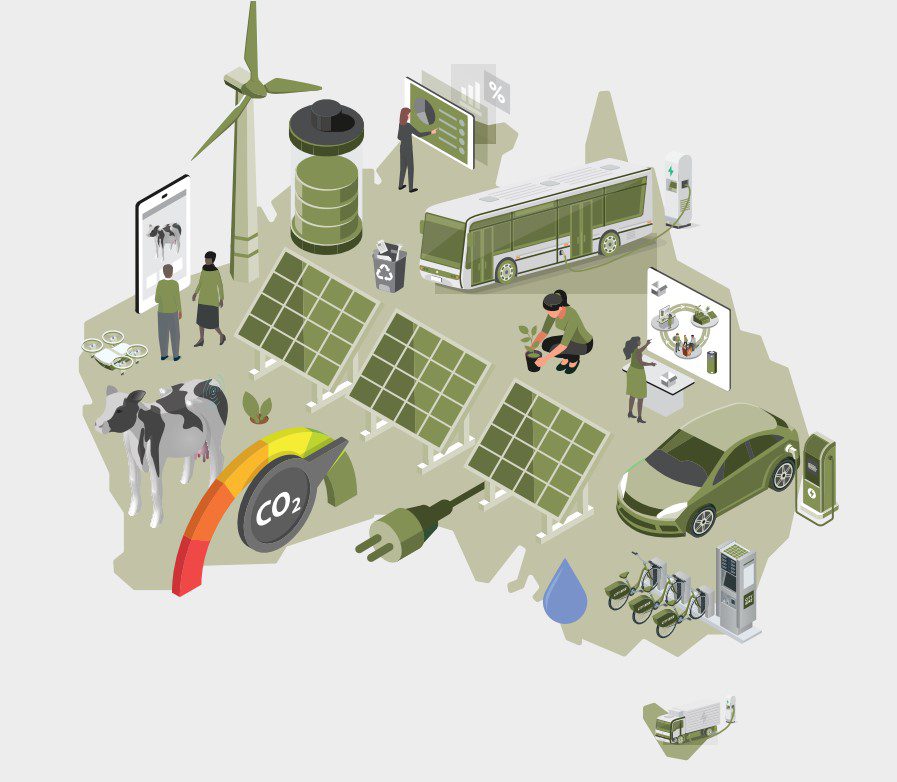The Australian Academy of Technological Sciences and Engineering (ATSE) has released a statement urging the government to be more ambitious with its energy targets – net zero greenhouse gas emissions by 2035.
This is just one day after the Climate Council called on the government to do the same.
“The science is unequivocal, the climate induced catastrophes are irrefutable. ATSE calls for leaders across every Australian sector to join us in making Australia a frontrunner amongst global peers, in setting an ambitious target of net zero greenhouse gas emissions by 2035,” said ATSE President Dr Katherine Woodthorpe.
“To meet this ambition, with the Federal Government in the driver’s seat, Australia should prioritise upskilling our workforce, and develop and urgently apply evidence-based solutions across all industry sectors – particularly in energy, transportation, manufacturing, construction, minerals and agriculture.”
The position statement highlighted six top priorities. They included developing new policy for the energy network, limiting waste, and increasing the electrification of the transport industry.
“We’re the engineers and the applied scientists, we’re the ones where the rubber hits the road – who work out how to do this,” Woodthorpe told RenewEconomy.
“And we’re saying it’s doable. It’s not easy. It’s a huge task, but it’ll set Australia’s economy up for the future in a world where climate will be a real issue.”
Woodthorpe said that although the grid transition is well underway in Australia – noting the new renewable energy generation record of 70.6% on Wednesday – more needs to be done at a faster pace.
“Don’t relax the pressure – do more, move faster,” Woodthorpe added.
The ATSE position statement was released along with explainers that when into more details about the solutions for important areas – like the electricity grid.
These solutions included increasing transmission, spreading solar and wind further geographically to provide a more constant supply of electricity and increasing battery and hydro storage.
The emerging technologies they highlighted were virtual powerplants, hydrogen electrolysers and using electric vehicles as batteries for the home.
Far from just looking at the technology, the report suggests that all of these technologies and changes to the power grid will need to be supported by economic incentives.
“These economic incentives should be driven by policy certainty, which will underpin greater investment in clean energy infrastructure and grid security,” they write in the report.
“These actions will reduce the risk of energy shortfalls and the associated brownouts or blackouts.”
When asked, Woodthorpe noted that these solutions have not yet been costed, although numbers have shown that the cost of doing nothing is likely to be far higher.
“We’re the scientists and technologists, not the economists. We need to work with them to work out how much this is going to cost and how to implement it in the best way from an economic point of view,” she said.
“But it’s an investment in Australia’s future, not just in Australia’s goodwill to the planet. Otherwise, we will become a laggard in the economies of the world.”










